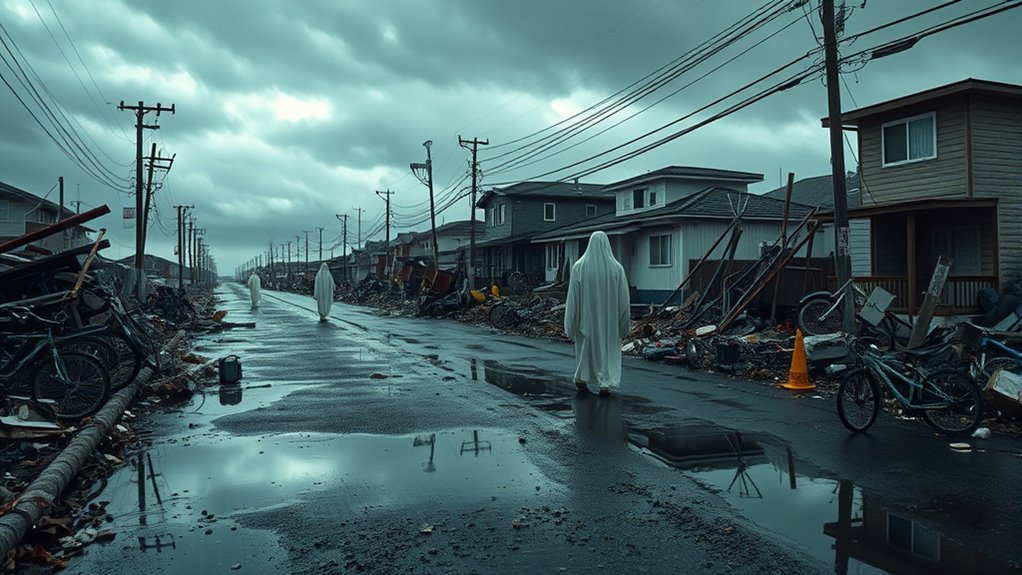After the 2011 Japan tsunami, ghost stories emerged reflecting their cultural belief in spirits as unresolved or tied to loved ones. Survivors and communities report sightings of spirits wandering coastal areas and abandoned buildings, often with sadness and longing. Memorials and rituals help comfort both the living and the spirits, fostering healing and resilience. Understanding these traditions reveals how Japan copes with disaster emotionally and spiritually—if you keep exploring, you’ll learn more about this profound connection.
Key Takeaways
- Reports of ghost sightings along the coast reflect spirits of tsunami victims, embodying unresolved grief and emotional bonds with the land.
- Memorials and rituals, like candle offerings, serve to honor spirits and promote spiritual peace in affected communities.
- Sightings often include shadowy figures, cold spots, and distant cries, highlighting ongoing spiritual connections to the disaster.
- Incorporating spiritual beliefs through rituals and storytelling aids survivors’ psychological healing and community resilience.
- The cultural significance of ghosts in Japan emphasizes remembrance, respect for the deceased, and the role of spirits in collective memory.
The Cultural Significance of Ghosts in Japanese Tradition
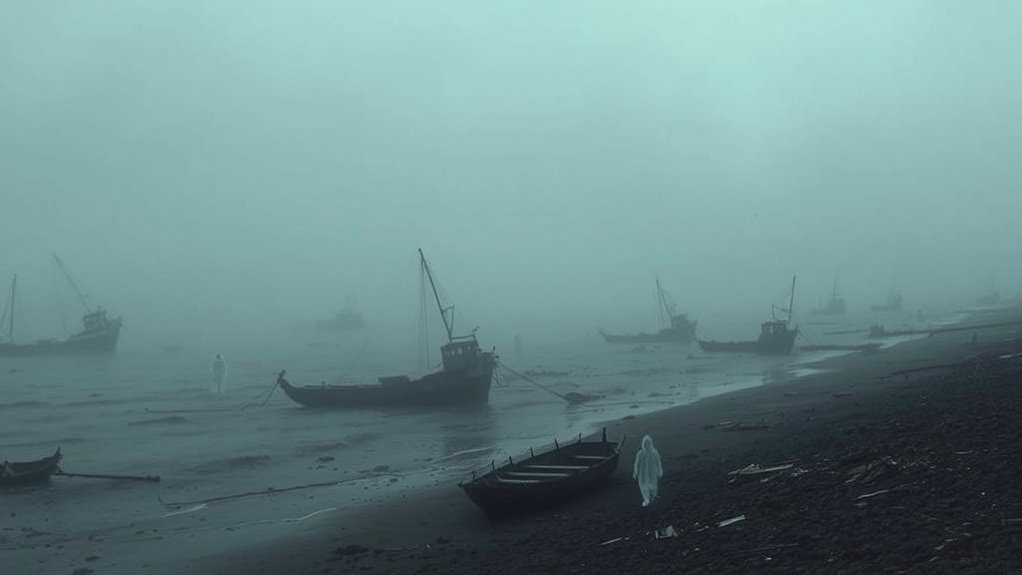
In Japanese tradition, ghosts, or yūrei, hold deep cultural significance as symbols of unresolved spirits and emotional ties. They reflect the importance of ancestral veneration, emphasizing respect for those who have passed and the ongoing connection between the living and the dead. Spiritual folklore portrays yūrei as messengers or remnants of loved ones, reminding you of the enduring bonds beyond death. These spirits often embody unresolved feelings, such as regret or longing, which influence rituals and customs. Japanese culture views yūrei not only as frightening apparitions but also as carriers of history and emotion. This tradition underscores a profound respect for ancestors, shaping how communities honor their memory and interpret the spiritual world, especially during times of tragedy like tsunamis. Additionally, the integration of Spiritual folklore into daily life highlights the enduring influence of traditional beliefs on contemporary practices. Recognizing these cultural beliefs helps explain the enduring respect and rituals surrounding spirits in Japanese society. Moreover, understanding the wealth of cultural symbolism associated with yūrei enriches the appreciation of their role in Japanese history and collective memory. The emotional significance of these spirits continues to influence modern Japanese cultural expressions and memorial practices. Furthermore, the traditional rituals performed during memorial ceremonies serve to reaffirm the ongoing connection between the living and the spirits of the deceased.
Personal Accounts and Sightings of Tsunami Spirits

Many residents and visitors who experienced Japan’s deadly tsunamis have reported eerie sightings of spirits believed to be the lingering ghosts of those lost. At haunted locations along the coast, people often describe sudden cold spots, flickering lights, or shadowy figures. Witnesses recount instances where they see apparitions wandering near the shoreline or inside abandoned buildings, feeling an intense sense of sadness or longing. Some describe hearing distant cries or whispers, as if the spirits are trying to communicate. These personal accounts add a haunting dimension to the tragedy, emphasizing the deep emotional connection between the land and its lost souls. Spirit sightings at these haunted locations serve as poignant reminders of the devastating impact and lingering presence of those who perished. Recognizing these dream symbols can help contextualize the emotional and spiritual significance of such ghostly encounters.
Memorials and Rituals Addressing the Spirits of the Disaster
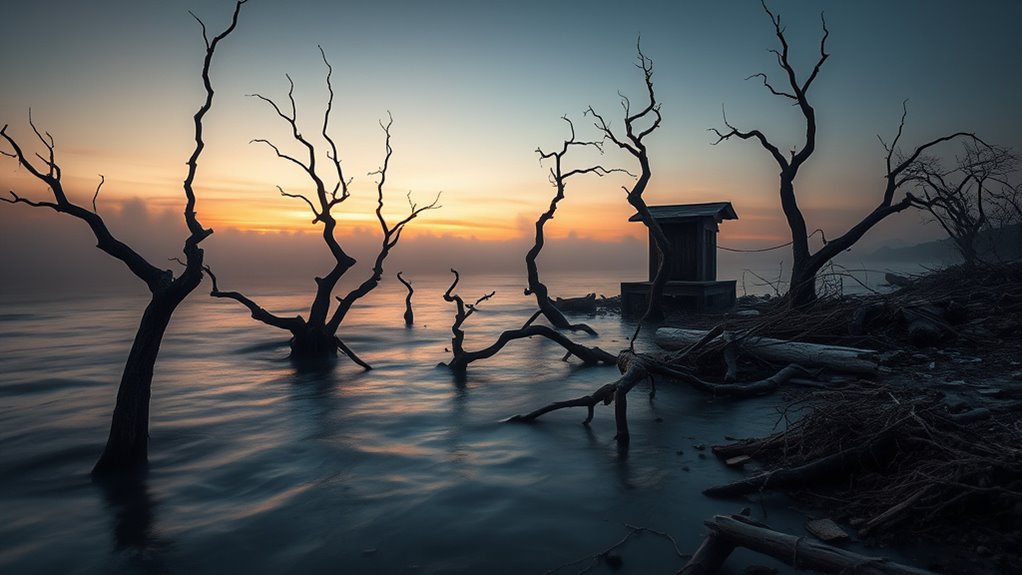
To honor those lost in Japan’s devastating tsunamis, communities have established memorials and rituals aimed at comforting both the spirits and the living. These include specialized funeral practices and ritual offerings designed to show respect and facilitate spiritual peace. People gather at memorial sites to pay tribute, lighting candles and presenting symbolic items. Many participate in annual ceremonies to keep the memories alive and acknowledge the spirits’ presence. These rituals serve as a bridge between the living and the dead, offering solace and hope. The table below illustrates some common memorial practices:
| Ritual Practice | Purpose |
|---|---|
| Funeral ceremonies | Honor the deceased and offer peace |
| Ritual offerings | appease spirits and show respect |
| Memorial events | Remember and maintain connections |
Additionally, modern climate control technologies such as heat pumps can play a vital role in supporting sustainable memorial sites by providing efficient heating and cooling solutions that help preserve these cultural landmarks. Understanding the cultural significance behind these rituals helps ensure their respectful continuation and adaptation over time. Recognizing the importance of traditional practices can also aid in fostering community resilience and continuity during memorial events. Incorporating innovative preservation methods can further enhance the longevity and respectful maintenance of these sites, ensuring they remain a vital part of cultural memory for generations.
Psychological Impact on Survivors and Communities
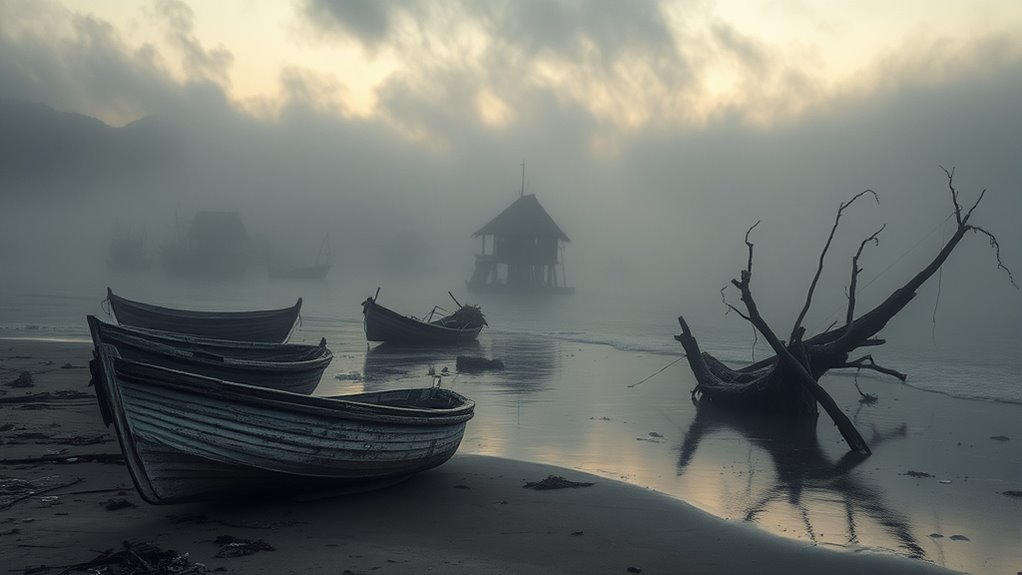
Survivors and communities often carry deep psychological scars long after the waves recede, as the trauma of the disaster leaves a lasting imprint on their mental health. Many turn to supernatural beliefs, seeing spirits or ghosts as manifestations of unresolved grief or guilt. These beliefs can complicate the healing process, as some fear these spirits might linger or cause harm. However, recognizing the spiritual presence can also foster community healing, offering shared ways to cope and find closure. Rituals and memorials rooted in these beliefs help individuals confront their trauma and reconnect with their community. By embracing these cultural perspectives, survivors find comfort, understanding, and collective strength, easing the emotional burden and promoting long-term psychological resilience. Additionally, the psychological impact of such disasters often includes symptoms of anxiety and depression that require ongoing support and understanding. Incorporating spiritual beliefs into mental health strategies can be beneficial in addressing complex grief and trauma, especially when cultural traditions are integrated into recovery efforts. Recognizing the lasting psychological scars helps tailor more effective healing practices that honor both mental health and cultural identity. Furthermore, understanding the role of cultural rituals in healing can enhance community support systems, enabling survivors to rebuild trust and social cohesion.
Resilience and Coping Mechanisms in the Aftermath
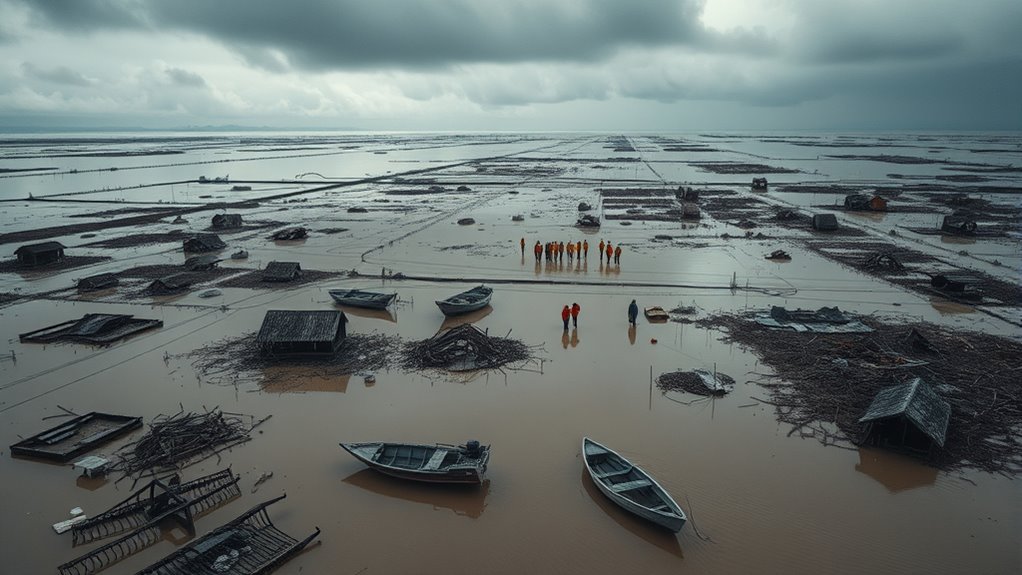
How do communities rebuild strength and find hope after such overwhelming destruction? You turn to resilience and coping mechanisms rooted in tradition and collective effort. Supernatural folklore plays a crucial role, offering cultural stories that help interpret the tragedy and honor those lost. Community healing often involves rituals and memorials that acknowledge grief while fostering unity. These practices provide comfort and a sense of continuity amid chaos.
- Sharing stories of ghosts and spirits to process grief
- Organizing memorial events that reinforce community bonds
- Using folklore to preserve cultural identity through storytelling
Frequently Asked Questions
How Do Japanese Communities Interpret Tsunami Ghost Sightings Today?
You might find that Japanese communities interpret tsunami ghost sightings through spiritual beliefs, seeing them as spirits of those lost seeking closure. They often engage in community rituals like memorial services or offerings to honor these spirits. These practices help locals cope with grief, maintain cultural traditions, and foster a sense of connection and healing, reflecting deep-rooted beliefs about spirits and the importance of respecting the dead.
Are There Any Scientific Explanations for Ghost Sightings After the Disaster?
You might think ghost sightings are pure superstition, but scientific explanations point to psychological trauma and environmental factors. After a disaster, your mind can conjure vivid images, blending grief and stress into haunting visions. Sensory overload, sleep deprivation, and intense emotions can make you perceive ghostly figures. These experiences aren’t supernatural; they’re your mind’s way of processing overwhelming trauma and environmental cues, creating haunting memories that feel all too real.
How Has Media Coverage Influenced Public Perception of Tsunami Spirits?
You see that media sensationalism amplifies stories of tsunami spirits, shaping how people perceive these phenomena. Cultural narratives play a big role, as they influence the way media reports on ghost sightings, often blending tradition with sensationalism. This combination heightens public curiosity and fear, making the spirits seem more real and haunting. Ultimately, media coverage reinforces these cultural stories, impacting how communities interpret and respond to reports of tsunami spirits.
Do Other Natural Disasters in Japan Have Similar Ghost Stories?
They say “truth is stranger than fiction,” and Japan’s other natural disasters, like earthquakes and typhoons, also spawn ghost stories rooted in cultural symbolism. You’ll find folklore preservation alive in tales of spirits lingering from past events, emphasizing respect for nature’s power. These stories serve to remind you of the enduring bond between history and spirituality, highlighting how natural disasters shape cultural memory through haunting narratives.
What Role Do Government Agencies Play in Managing Ghost-Related Folklore?
You should know that government agencies play a vital role in managing ghost-related folklore through government policy and folklore preservation initiatives. They often document stories, support cultural events, and promote awareness to keep these tales alive. By doing so, they guarantee that local traditions are respected and preserved, helping communities maintain their cultural identity while addressing the supernatural narratives that shape their collective history and beliefs.
Conclusion
As you reflect on Japan’s tsunami ghosts, remember they embody both grief and resilience—reminding us that even in darkness, hope flickers like a guiding star. These spirits symbolize the enduring human spirit, whispering stories of loss and survival. By honoring them through rituals and remembrance, you participate in a healing journey that transforms sorrow into strength. In embracing these ghosts, you discover that mourning is the seed from which resilience blooms.
